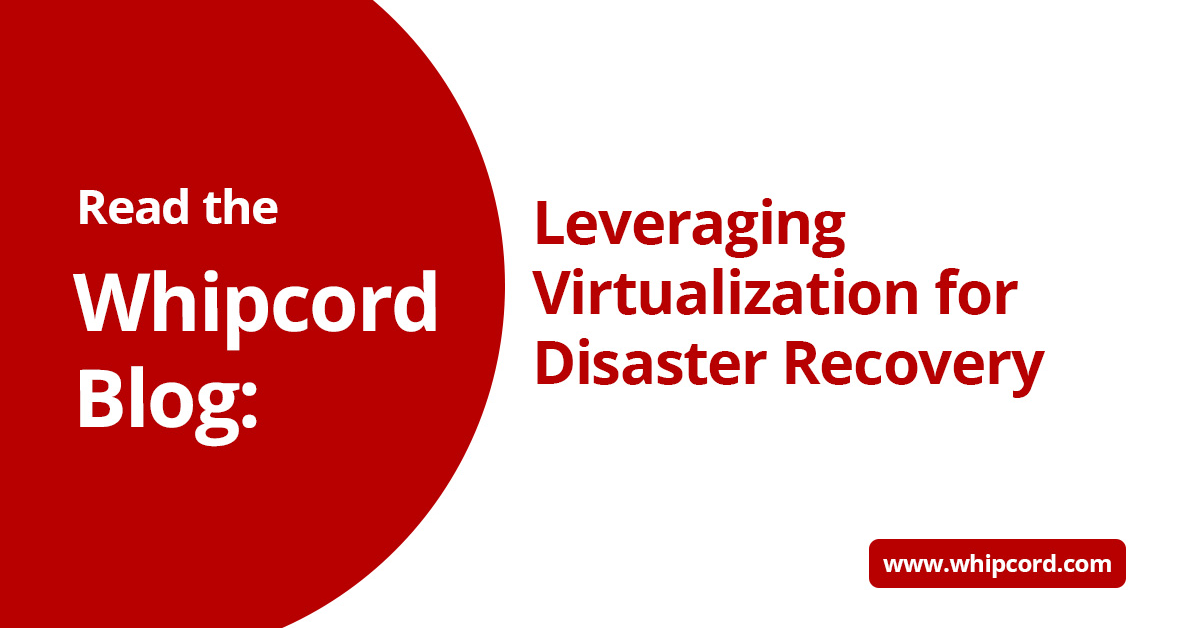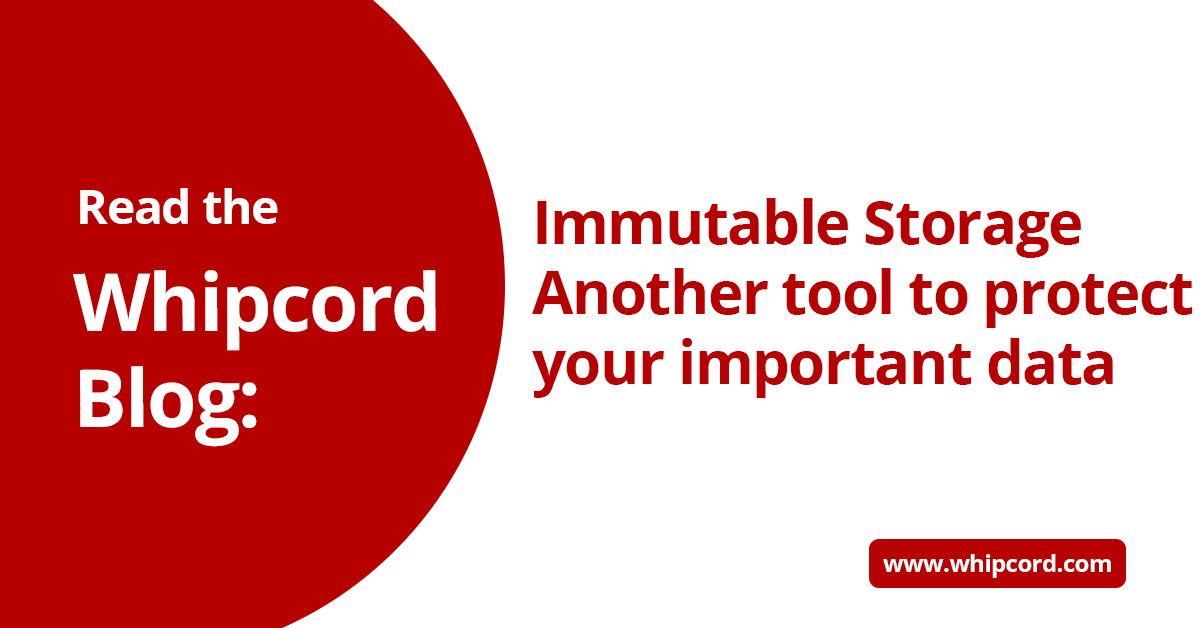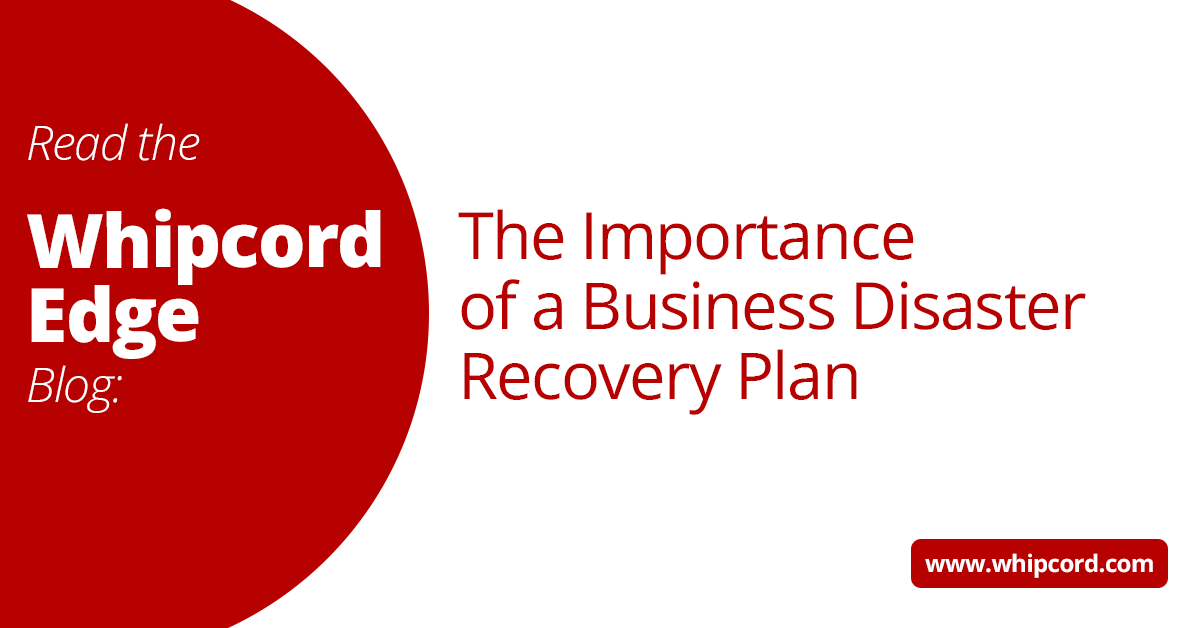Most organizations are well aware of the benefits of virtualization in getting the most out of hardware and simplifying deployment of machines to support their business. There are also a plethora (big word!) of software solutions to help you protect your VM data such as Veeam and Zerto for example.
We’ve talked in past blog posts about the difference between Cloud Backup and Cloud Replication to when considering Recovery Point Objectives (RPO - how recent and how many secure copies of my data do I need) and Recovery Time Objective (RTO - how quickly do I need to get my critical systems up and running), so we won’t revisit that here.
We did want to provide an overview on how virtualization supports disaster recovery (DR) with a partner like Whipcord Edge (our DRaaS) can streamline the process.
First off, whether it's a hardware failure, a cyberattack/ransomware or a natural disaster, Disaster preparedness for systems and data is more important than ever. Virtualization is a powerful tool for many organizations to ensure a robust disaster recovery posture.
The challenges for many organizations can be getting things to that next level – actually deploying, testing and maintaining a DR program with busier than ever IT teams with at times mixed IT loads with virtual and non-virtual workloads. This blog touches on those considerations and how partnering with an org like Whipcord Edge can help.
The Power of Virtualization in Disaster Recovery
Virtualization technology has revolutionized the way organizations manage their IT resources. By abstracting hardware from software, it enables the creation of virtual machines (VMs) that can be rapidly deployed, scaled, and moved between physical servers. This inherent flexibility makes virtualization an ideal candidate for disaster recovery planning.
Here's how virtualization can enhance your DR strategy:
-
Rapid Recovery:
In the event of a disaster, VMs can be quickly spun up from backups, local and cloud, reducing recovery times and minimizing downtime. -
Isolation:
VMs can run on separate physical servers, ensuring isolation from the source of failure, thereby reducing the risk of data loss. -
Testing and Validation:
Virtualization allows for easy testing of DR plans without affecting production systems, ensuring readiness for real-world scenarios.
Challenges:
-
DR Hygiene:
Any program needs some care and feeding, and DR is no different. Virtualization allows you to deploy quickly, but making sure new VMs are part of your backup or replication jobs and easily found and accessible sometimes get missed. -
Restore from snapshots or backups doesn’t mean back in action:
First you have to find a server or capacity somewhere, and after a restore you need to think about networking. -
Time for testing:
Unfortunately, IT Teams have a number of priorities and often backup and disaster recovery is the last item on the list. -
Non-Virtual Workloads:
Legacy systems or specialized environment deployed on bare metal often to minimize software licensing costs need to be considered.
Whipcord Edge: Your Data Protection Partner
Deploying a public or private cloud-based disaster recovery service can be a game-changer for your organization, but it often places a significant strain on internal IT teams. This is where a partner like Whipcord Edge comes into play.
Disaster Recovery as a Service with the right partner provides you the expertise with data protection and private cloud solutions, offering a tailored approach to disaster recovery that aligns with your unique needs and budget.
- Expertise: With Whipcord Edge, you gain access to a team of experts well-versed in virtualization and private cloud technologies.
- Infrastructure: They provide a robust and scalable infrastructure, eliminating the need for you to invest in additional hardware.
- Ready to go: A DRaaS solution should be preconfigured with VM replicas, network ready and tested routinely so you can launch your critical workloads when you need it.
- Ongoing Support: From setup and configuration to ongoing maintenance and testing support, Whipcord Edge handles it all, freeing up your IT team to focus on strategic initiatives.
- Non-Cloud Workloads: This can be a challenge for cloud only solutions, but a hybrid cloud provider with bare metal support and colocation options can help build a FULL DR program to suit your business environment.
- Data Jurisdiction: For those industries that need to make sure data remains in Canada or even in province, a full-service partner can help fill all the gaps for your business.
Virtualization is a game-changer when designing your disaster recovery plan, and partnering with a data protection partner like Whipcord Edge can make the journey smoother and more efficient. The expertise of a trusted private cloud partner, you can ensure that your organization is well-prepared to weather any storm and maintain business continuity in the face of adversity.
-1.png?width=1092&height=792&name=logo%20(1092x792)-1.png)
%20copy(black%20letters).png?width=1092&height=792&name=logo%20(1092x792)%20copy(black%20letters).png)




.png?width=100&height=91&name=white%20logo%20(100x91).png)